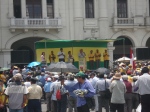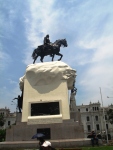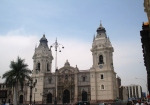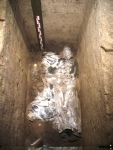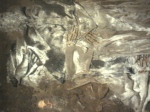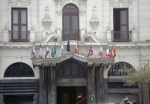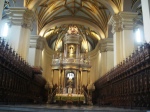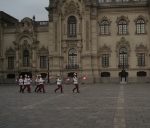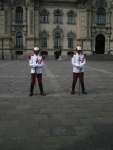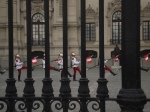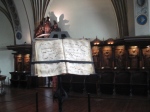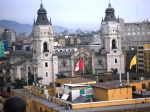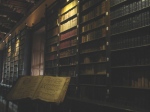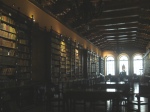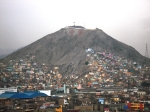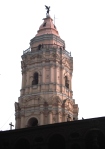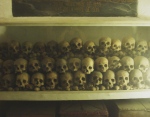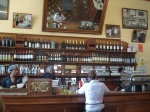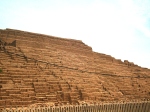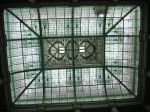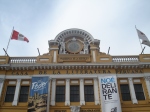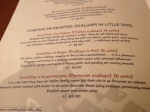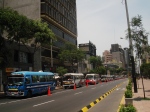(To view as a slide show, click on an image below and toggle through using arrows)
The first stop on our South American tour was Lima, Peru.We stayed in a small hotel in Miraflores, and having arrived very late at night, we had no idea that the city was such a roiling, bustling, crazy anthill. Thinking that we would move around town by foot or by public transportation, as we usually do, we found ourselves absolutely confounded by the bus system. There are private and public buses, electric buses, vans and mini-vans, and I am in awe of anyone who can figure out who goes where, when, and for what price. Intimidated, we walked in Miraflores instead, and when we went to central Lima, we took a taxi. We were happy to discover that: a) distances are far greater than one expects and b) taxies are dirt cheap. We had a great few days in Lima, and every person we encountered was friendly and helpful.
Why begin in Lima? We have always wanted to visit Machu Picchu, and so would have to fly into Lima before heading to Cusco and then Aguas Calientes in order to go to the famous site. But, to anyone who has met us, you will not be surprised to hear that the burgeoning culinary scene in Peru was an equally compelling reason to spend some time in the capital. It did not disappoint. Incredibly fresh ingredients, particularly seafood, can be found from the funkiest little café to the poshest “Nuevo Peruano” restaurant. We had three especially memorable meals. El Cordano was special just because of the location close to the government seat; an old, traditional bar/restaurant that has served every Peruvian President since independence. The typical Peruvian food was simple and very well prepared, and the vibe was a little like time traveling. Second, Huaca Pucllana restaurant, set right in the ancient ruins, was outstanding for the views alone. Although a little higher-priced than our usual haunts, to sit in this incredibly unique setting, a pre-Columbian restored adobe ceremonial center from Lima culture, dating back to 400 AD, was otherworldly. A little charred octopus while sitting among the ruins–why not? Last, and most memorable for me, was Pescados Capitales in the warehouse loft area of the Miraflores disctrict, where we had some of the best ceviche I’ve ever eaten. I will dream about the scallops, they were that good.
But we did more than eat and drink and walk our feet off while in Lima. Naturally, there are churches and cathedrals to visit. Two of the most important are the the Cathedral of Lima and the Iglesia Santo Domingo, where the first University in the Americas was founded, (sorry, William and Mary). The Cathedral, where construction began in 1535, is the place where conquistador Francisco Pizarro is interned, and where he was reunited with his head in the 1980’s—a pretty fascinating story. The crypts were deliciously creepy, and the cathedral quite lovely. The Iglesia de Santo Domingo and its priory, however, house the most important bones for Peruvian Catholics—the skulls of three saints—Santa Rosa de Lima, the first Saint to be canonized in the Americas, San Martín de Porres, the first African-American saint to be recognized by the Vatican, and San Juan Macías.
While visiting one of the two main squares in Lima, Plaza San Martín, we came upon a crowd of people carrying placards and demonstrating for workers’ rights. It was fun to hear the Peruvian version of the Internacional being sung in the square. Next we moved on to the Plaza de Armas, where the Cathedral, Government Palace, and Santo Domingo are all located. Distracted by the demonstrations at Plaza San Martín, we arrived too late to see the changing of the guard at the Palace. No problem—my new bff Percy Olazabal (yes, it’s a Basque name!) told us to come back at 6 en punto to see the guards march again for the lowering of the flag. After asking about our travels and hometowns, he posed, rifle at the ready, for a photo with me. Not something that would happen at the White House or Buckingham Palace, is it?
While in the Central part of Lima, we had to stop at the Hotel Bolivar, a grand old hotel, although its grandeur is a bit faded now. I remembered drinking Pisco sours there—too many Pisco sours—when I was barely out of high school. It was nice to go back and have another drink—this time just one—so many years later.
Our stay was perfect in Lima, if not a little too short. While strolling out to the beach area one morning, after asking directions of yet another friendly local who was so helpful he practically offered to carry us, Ray turned to me and said, “I’m in love with Lima!”


